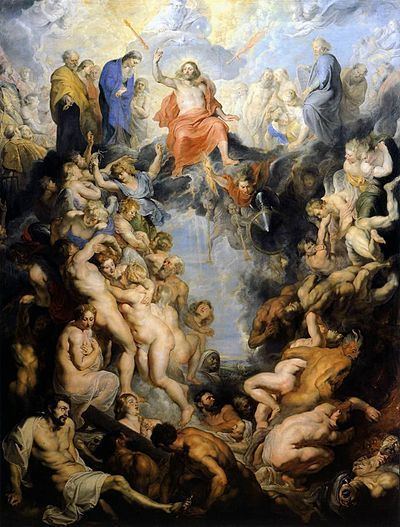Artist Peter Paul Rubens | Created 1617 | |
 | ||
Similar Peter Paul Rubens artwork, Other artwork | ||
The Great Last Judgement is an oil on canvas altarpiece, painted by the Flemish artist Peter Paul Rubens between 1614 and 1617. He created the composition and final touches and his is the only signature on the work, though it is believed between nine and nineteen studio assistants also worked on it. Its name distinguishes it from the same artist's The Small Last Judgement of 1619 and his The Fall of the Damned of 1620.
It was one of four altarpieces commissioned from Rubens for the Jesuit church at Neuburg an der Donau by Wolfgang William, Count Palatine of Neuburg. It later passed into the private collection of Johann Wilhelm, Elector Palatine and is now in the Alte Pinakothek in Munich.
Description
The painting shows the Last Judgement, with Jesus at the top centre. To Jesus' right is his mother the Virgin Mary and to his left is Moses, holding the tablets showing the Ten Commandments. Rising up the left hand side of the painting (at Jesus' right hand) are the blessed, whilst the damned fall into hell on the right hand side. At the base of the painting are the dead, dying and those just resurrected.
